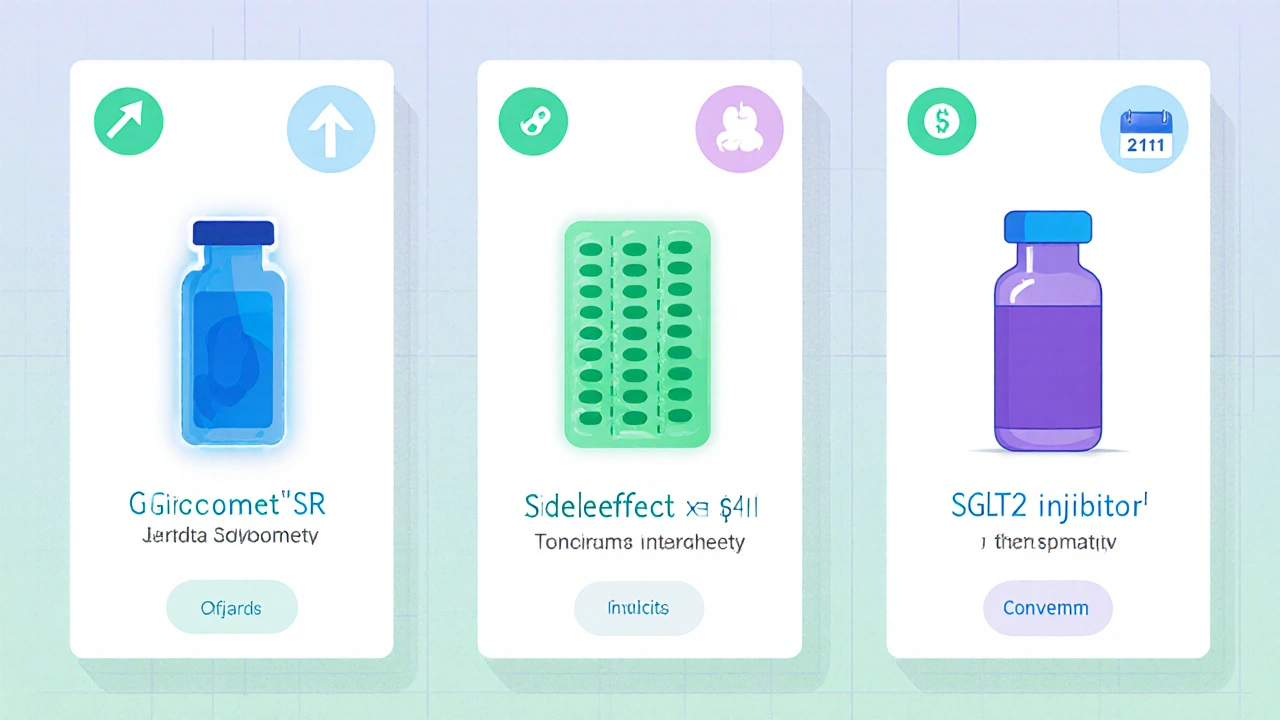When working with SGLT2 inhibitors, a class of oral drugs that block the sodium‑glucose cotransporter‑2 in the kidneys to lower blood sugar. Also known as gliflozins, they have become a cornerstone in modern diabetes care. The same mechanism also helps remove excess glucose through urine, which translates into lower HbA1c levels. Another key player in this story is type 2 diabetes, a chronic condition marked by insulin resistance and high blood glucose. Because the kidneys handle about 180 g of glucose daily, inhibiting SGLT2 creates a safe, insulin‑independent pathway to shed sugar.
Beyond glucose control, heart failure, a condition where the heart cannot pump enough blood to meet the body’s needs has emerged as a major benefit area. Large outcome trials showed that patients on SGLT2 inhibitors experience fewer hospitalizations and lower cardiovascular mortality – a clear semantic triple: SGLT2 inhibitors reduce heart failure risk. Likewise, chronic kidney disease, progressive loss of kidney function often seen in diabetic patients slows down when these drugs are added, giving a second triple: SGLT2 inhibitors protect kidney health. The combination of blood‑sugar lowering, heart protection, and kidney preservation makes the drug class attractive for clinicians seeking a multi‑target approach.
First, the glucose‑lowering effect is modest but reliable – usually a 0.5–1.0 % drop in HbA1c – and it works regardless of insulin secretory capacity. Second, the diuretic‑like action reduces preload and blood pressure, which explains the heart‑failure benefit. Third, the shift in renal hemodynamics lowers intraglomerular pressure, slowing albuminuria progression. When you pair these effects with lifestyle changes, you often see weight loss of 2–3 kg, another appealing triple: SGLT2 inhibitors aid weight management. For patients already on metformin, adding a gliflozin is a common step before moving to injectable therapies.
In practice, clinicians also consider drug‑specific attributes. Empagliflozin, canagliflozin, and dapagliflozin differ slightly in dosing frequency, cardiovascular outcome data, and FDA‑approved indications. For example, empagliflozin carries the strongest evidence for reducing cardiovascular death, while dapagliflozin is approved for both heart‑failure with reduced ejection fraction and chronic kidney disease. Knowing which agent fits a patient’s profile is part of the decision‑tree: SGLT2 inhibitor choice depends on comorbidities. Side‑effects are generally mild – genital yeast infections and occasional volume depletion – but serious concerns like rare ketoacidosis or amputations with canagliflozin keep prescribers vigilant.
Another emerging relationship involves GLP‑1 receptor agonists, injectable drugs that enhance insulin secretion and slow gastric emptying. When used together, they provide additive glucose‑lowering while preserving the cardiovascular and renal gains of each class. This synergy creates a third triple: Combining SGLT2 inhibitors with GLP‑1 agonists improves overall outcomes. Many guidelines now list the combination as a preferred option for high‑risk patients.
Insurance coverage, pill burden, and patient preference also shape real‑world use. Because SGLT2 inhibitors are oral, they simplify adherence compared with injectables. However, cost can be a barrier, so generic versions or manufacturer assistance programs become relevant discussion points.
All these angles – mechanism, heart‑failure data, kidney protection, weight impact, and combination therapy – form the backbone of the collection below. Below you’ll find detailed articles that break down each drug’s profile, compare them against older alternatives, and give practical tips on prescribing, monitoring, and managing side‑effects. Dive in to see how SGLT2 inhibitors fit into modern diabetes care and what the latest research says about their expanding role.

Learn how canagliflozin can affect your eyes, what the latest research says, and practical steps to keep your vision safe while managing diabetes.

A comprehensive comparison of Glycomet SR (extended‑release metformin) with other metformin brands and newer diabetes drugs, covering efficacy, safety, cost, and who should use each option.
